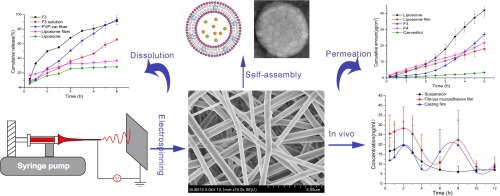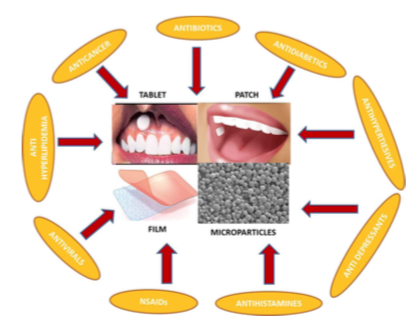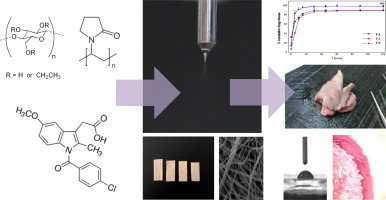- Home
- Blog
- News
- Basics
- Sources
- Agencies, Regulatory & Organisations
- CERSI Excipients Browser
- Excipient Report
- Excipient DMF List
- EXCiPACT Certified Companies
- Excipient Documentation
- Excipient EINECS Numbers
- Excipient E-Numbers
- FDA Inactive Ingredient List
- FDA GRAS Substances (SCOGS) Database
- IPEC Americas
- USP - U.S. Pharmacopeia
- Definitions
- Whitepapers / Publications
- Supplier
- Services
- Media
- Events
- 1st pharmaexcipients Poster Award
- Event Calendar
- Events featured by pharma-excipients
- 4th Annual Formulation & Drug Delivery Congress
- DDF Summit
- ExcipientFest Americas
- ExcipientFest Asia
- Global CompliancePanel
- International Conference and Exhibition on Pharmaceutics & Novel Drug Delivery Systems
- Formulation & Drug Delivery USA Congress
- Laboratory Medicine 2018
- Making Pharmaceuticals Europe
- Making Pharmaceuticals Exhibition
- Pharma Integrates
- PharmaExcipients China @CPhI China
- TTC Technology Training Center
- Jobs
- Online Sourcing
- Contact
11. September 2018
Oromucosal drug delivery is necessary when a local effect in the oral cavity is required. Bioadhesive formulations should be advantageous because a larger fraction of the active principal is retained at the site of action allowing for an enhanced and prolonged effect. Despite a variety of mucoadhesion test systems being described in literature, none of these in-vitro tests does relate to physiological conditions in the oral cavity and suites for the testing of complete dosage forms, e.g....
30. May 2018
A novel delivery system based on self-assembled liposome from multi-layered fibrous mucoadhesive membrane has been developed to improve the bioavailability of Carvedilol (Car). This system consisted of an electrospun layer (enable self-assembly of liposome once contacting with water), an adhesive layer (prolong the retention period in the mouth) and a backing layer . SEM、 DSC and FTIR were applied to characterize the fiber. The TEM and fluorescence study demonstrated the formation of...
10. November 2017
Mucoadhesive formulations are well known for the delivery of drugs via the mucosal membrane of oral (sub- lingual, buccal and gingival), rectum, nose, eyes, and vagi- na. Among the various drug delivery approaches, the buc- cal mucosa delivery system o ers several bene ts like easy accessibility, patient compliance, a relatively large surface area of absorption for drug molecules, reduced gastric ir- ritation and simple delivery devices.
07. October 2017
Polymer based dosages form the mainstay of drug delivery systems either as simple matrix carrier materials or active release behaviour modulating agents. In addition, several techniques have been developed further to deliver novel polymeric structures. One such method is electrospinning (ES); a maturing process which is operational at the ambient environment and enables drug loading (in molecularly dispersed form) directly into a fibrous polymer matrix system. Since there is an impending need...
07. September 2017
Abstract Purpose: To formulate and evaluate an antispasmodic drug, mebeverine hydrochloride (Mbv-HCl), as a local anesthetic mucoadhesive buccal tablet. Methods: Mbv-HCl loaded tablets were formulated, using a direct compression technique, with varying polymer concentrations including carbopol 934P alone, carbopol 934P/hydroxypropyl methylcellulose (HPMC) mixture, or carbopol 934P/chitosan mixture. The tablets were evaluated for physicochemical characteristics, in-vitro drug release,...
04. August 2017
Despite significant advances in pharmaceutical and biotechnological drug discovery, the global population is plagued with many challenging diseases.
12. June 2017
Anionic polymers were modified with sulfhydryl bearing ligands to evaluate their mucoadhesiveness.
• Mucoadhesion augmented up to 59.23-fold compared to corresponding unmodified polymer.
• Tensile strength, bioadhesion, rotating cylinder and consolidation assay were performed on buccal tissue.
11. April 2017
Summary Topical drug application has the advantage of avoiding systemic side effects. We attempted to develop a long-acting matrix-type tablet containing indomethacin (IM) with low physical stimulus and potent mucoadhesive force to treat pain caused by oral aphtha. A mixture of polyethylene glycol (PEG) and hard fat was used as the tablet base. Ethylcellulose was added to the base in an attempt to control drug release. Tablets with PEG as a base were also prepared for comparison. Polyvinyl...
21. February 2017
Abstract The present investigation was undertaken with the objective of formulating Bufotenin for rapid dissolution of drug and absorption which may produce the rapid onset of action and also to improve the bioavailability of the drug. The fast dissolving strips were prepared by solvent casting method with the selection of HPMC E5, E15, K15, and Microcrystalline Cellulose (MCC), Polyvinyl Alcohol (PVA) as polymers and glycerol as plasticizer. Prepared lms were carried out for in vitro...
09. February 2017
ABSTRACT Objective: Transmucosal buccal drug delivery could be an alternative for oral administration for systemic delivery of Verapamil Hydrochloride (VH), as it has low bioavailability 20 - 35 % due to its extensive rst pass metabo- lism and variable absorption at GIT. Method: Buccal patches of VH were prepared by solvent casting method using bioadhesive polymers HPMC K4M, Carbopol 934P, Chitosan acetate and Okra mucilage isolated from Hibiscus esculantus fruits, in various combinations as...




